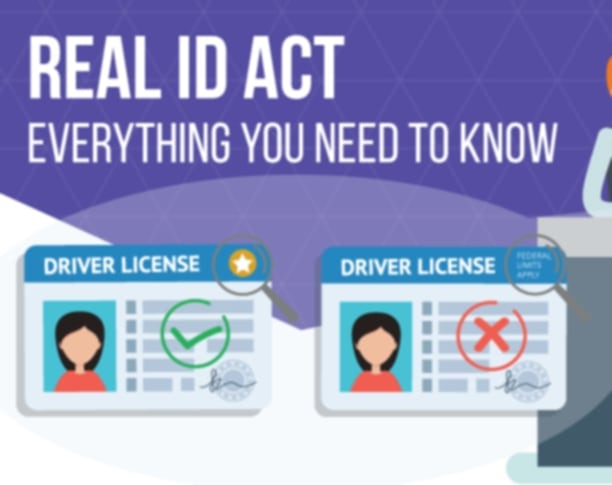
Understanding REAL ID in New Jersey: What It Is, Why It Matters, and Whether You Need One
Understanding REAL ID in New Jersey: What It Is, Why It Matters, and Whether You Need One
Presented by DeVault Law, LLC
5/5/20252 min read

Here at Devault Law LLC, we believe it's important to keep you informed about key issues that affect your daily life. We care deeply about our friends, family, and community, and that’s why we bring important updates like this to your attention.
After nearly two decades of delays, the REAL ID Act is finally set to go into full effect on May 7, 2025. This federal law will require U.S. travelers aged 18 and older to present a REAL ID-compliant driver’s license—or another accepted form of identification—to board domestic flights and enter certain federal buildings.
A Brief History of the REAL ID Act
Signed into law in 2005 as a post-9/11 security measure, the REAL ID Act was created to prevent the use of fraudulent IDs by establishing minimum security standards for state-issued driver's licenses and ID cards. It was originally supposed to go into effect in 2008, but due to resistance from states, privacy concerns, and logistical complications, the deadline has been pushed back several times—with the COVID-19 pandemic causing additional delays.
What This Means for You
Starting May 7, 2025, you’ll need a REAL ID-compliant license or another approved ID (like a passport) to:
Board domestic flights
Enter federal buildings
Access military bases
REAL ID-compliant licenses usually feature a star in the upper-right corner. Some states offer Enhanced Driver’s Licenses (EDLs), which are also acceptable and typically marked with a U.S. flag.
New Jersey and Enhanced ID States
New Jersey residents can obtain a REAL ID-compliant license through the New Jersey Motor Vehicle Commission (NJMVC). The process requires an in-person visit with multiple forms of documentation, so residents are encouraged to schedule appointments early.
In addition to standard REAL ID licenses, several states—including Washington State, Michigan, Minnesota, and New York—offer Enhanced Driver’s Licenses (EDLs). These not only satisfy REAL ID travel requirements but also allow land and sea border crossings into Canada, Mexico, and the Caribbean (though not air travel).
Public Response and Challenges
Despite outreach campaigns, many Americans still do not have a REAL ID. As of early 2025, about 81% of travelers are using compliant identification at TSA checkpoints. However, challenges remain—especially for women who have changed their names due to marriage or divorce, and for states with DMV appointment backlogs.
What You Need to Bring
To get your REAL ID-compliant license, you’ll need to provide:
Proof of identity (e.g., birth certificate or passport)
Proof of Social Security number
Two proofs of residency (e.g., utility bills)
Proof of lawful status in the U.S.
Each state may have specific requirements, so be sure to check your local DMV’s guidelines.
Final Thoughts from Devault Law LLC
At Devault Law LLC, we’re not just focused on legal issues—we’re also committed to empowering our clients and community with knowledge. Whether you're flying to see family, visiting a federal facility, or simply trying to avoid travel disruptions, knowing what to expect with the REAL ID Act can make a real difference.



